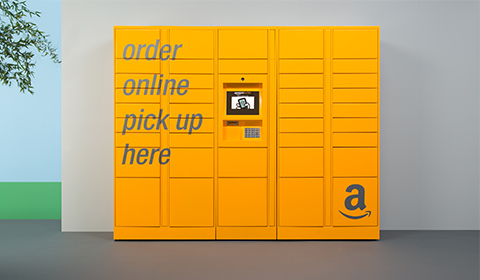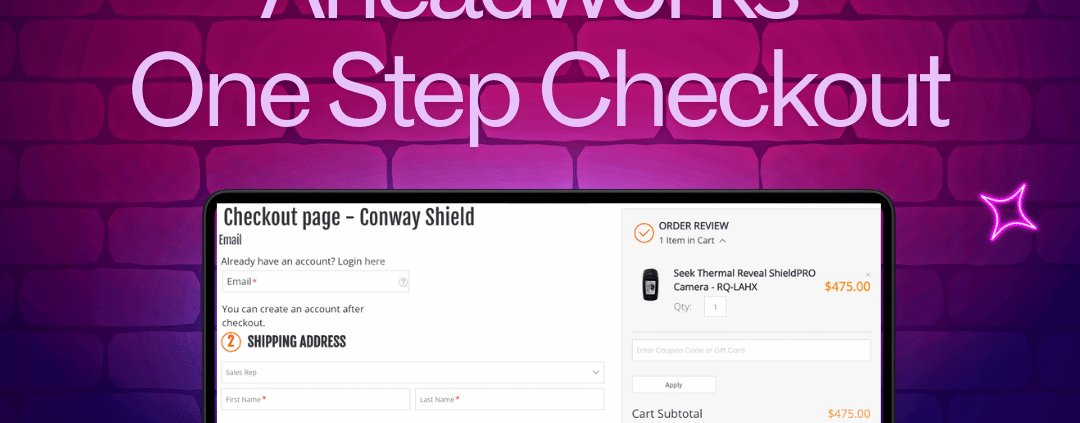Last-mile delivery
During the current COVID-19 pandemic, I would like to focus on the last-mile delivery aspect of the e-commerce industry.
Now, it is a crucial factor in the overall business continuity.
Last-mile delivery is the movement of goods from a transportation hub to the final delivery destination.
The final delivery destination is a personal residence, such as a home or apartment.
Last-mile logistics focuses on delivering items to the end-user as fast as possible.
Last-mile logistics
Last-mile logistics has become a popular area of interest for retailers due to the growing demand for fully integrated omnichannel retailing. Currently, many shops and restaurants are closed to regular clients. They can only prepare takeaway orders or online orders that can be delivered to the nearest shop or the package delivery locker.
Omnichannel delivery
Evolving omnichannel needs have compelled retailers to reassess their current transportation network capabilities and make necessary adjustments.
The focus has been placed on last-mile logistics because, in many cases, this is a key differentiation for retailers.
Because consumers can easily shop for product alternatives, retailers and their supply chain partners must provide exceptional service to gain market share and build brand loyalty.
Last-mile logistics is becoming increasingly critical due to the surge in online orders.
These expected increases span a variety of product types, including apparel, entertainment, food, health & beauty, electronics, and more.
Retailers must prepare their transportation networks to handle traffic fluctuations resulting from the expected growth in online sales.
Access points of a last-mile delivery
In the USA, UPS, FedEx, Amazon, and the US Postal Service offer over 70,000 staffed or automated access points where recipients can pick up their parcels, and this number is expected to grow to over 80,000 locations soon.
As online shopping continues to rise across Europe, shoppers are increasingly expecting fast, flexible delivery. DHL has a network of 340,000 lockers in Germany, accessible by 90 percent of the population, while many retailers, such as ASOS in the UK, also allow customers to return orders via a locker.In Poland for example, there is a growing popularity of Inpost lockers. In Finland – the same situation – more here.
• Dropboxes
• Mailboxes
• Carrier shipping centers
• Full-service, carrier-authorized outlets
• Parcel lockers
• Third-party retail stores
More recently, UPS and FedEx have been developing hybrid, limited-use access points via retail relationships to support consumer pickup of low-volume, e-commerce shipments. These locations do not offer full-service shipping support; however, they are situated perfectly to consolidate multiple e-commerce residential deliveries at a single pickup location. These types of access point facilities (known as PUDO in other markets) can also serve as drop-off points to consolidate consumer returns from e-commerce and low-volume business shipments.
Reducing the cost of residential, e-commerce delivery
Making a single-package e-commerce delivery to a residence is costly for UPS and FedEx. The two mega-carriers would likely be bankrupt if they relied solely on the current infrastructure to deliver e-commerce shipments. Nevertheless, the growth of e-commerce presents a tremendous revenue opportunity for the carriers, but only if they can reduce the operational cost of e-commerce delivery.
Low-volume residential deliveries will always be operationally expensive, and at some point, they could become so costly that the overall e-commerce value proposition could be jeopardized. The solution is to offer lower-cost alternatives to residential delivery that allow for the consolidation of multiple residential deliveries at a single access point for consumer pickup, resulting in significantly improved first-time delivery statistics.
UPS access points
During the past few years, UPS has signed up over 10,000 access point locations across the USA, mostly with independent retailers. Recently, UPS announced new access point relationships with retailers, including CVS, Advanced Auto Parts, and Michaels, which will increase its total access point locations to over 20,000. While these locations do not offer full-service shipping support, they do act to consolidate multiple e-commerce deliveries and parcel drop-offs at a single, conveniently located local store. UPS access points are required to maintain regular store hours and provide a secure location to store packages.
Adding many new corporate stores means UPS’s access point strategy now supports locally owned and large corporate retail stores. The benefit to the two retailer types is the opportunity to drive additional store foot traffic and new cross-over purchasing opportunities for the stores, which drives higher store revenue.
UPS compensates the access point business entity for handling packages. UPS automatically redirects many of its undeliverable residential shipments to the closest access point for consumer pickup and also works with e-commerce shippers to actively offer access points as a direct-delivery option.
FedEx on-site and ship-sites
FedEx has taken a different path from UPS by partnering exclusively with large corporate retail entities, such as Walgreens and Office Depot, to create an access point network. The Walgreens relationship is especially interesting, as it has permitted FedEx to add almost 10,000 locations for e-commerce package pickup over the past two years.
Since the Walgreens On-Site relationship is relatively new, FedEx still has much room to maximize value via this collaboration. Currently, it appears that FedEx’s focus for Walgreens On-Site locations is to redirect e-commerce deliveries to Walgreens via the FedEx Delivery Manager App. Like UPS, FedEx is automatically redirecting undeliverable residential shipments to Walgreens On-Site access points and is not yet aggressively offering Walgreens as a direct-ship option to e-commerce retailers. This is likely to change quickly with direct ship options from e-commerce merchants directly to Walgreens.
The FedEx/Walgreens collaboration presents tremendous long-term cross-over business opportunities for both companies, such as the delivery of medications from Walgreens to consumers. This partnership is also linked to FedEx usage by Walgreens, as well as aggressive FedEx shipping discounts for Walgreens.
Finally, FedEx has just announced a new on-site access point partnership with Dollar Store that could add over 8,000 new PUDO locations. The Dollar General alliance will increase the FedEx Retail Convenience Network to more than 62,000 retail locations.
FedEx’s approach means quicker network development and less management cost, but it is likely to offer less control over the access points, as well as the risk of losing a significant share of its network should the deal go sour.
The UPS Store
The 4,500+ UPS Store franchise locations are a huge differentiator for UPS. The franchisees that run these stores are the predominant pack-and-ship professionals across North America. This network of stores (similar to Parcel Shops in Europe) allows UPS to funnel all shippers and consumers to store locations to fulfill and satisfy any type of shipping or e-commerce-related service. The UPS Store is the dominant returns service provider and access point in the USA, and unlike many third-party access points, it can also generate significant outbound parcel revenue.
FedEx Office
The 1,800 FedEx Office locations are mostly rebranded Kinko’s copy locations that provide copiers, business printers, and pack-and-ship services. In recent years, FedEx has been transitioning the focus of these stores from business services to support consumer-based e-commerce services. This e-commerce focus for FedEx Office is further demonstrated as FedEx opens 500 new FedEx Office locations inside Walmart Superstore locations to cater to e-commerce customers. As with the UPS stores, they have the advantage of generating parcel revenue.
FedEx Delivery Manager and UPS My Choice
These are not shipping apps, but delivery apps that allow recipients to redirect residential deliveries to the closest access point. This interactive delivery management (IDM) technology is crucial to converting a costly residential direct shipment or failed delivery to a pickup at an access point. UPS and FedEx are likely to direct significant resources this year toward educating e-commerce recipients regarding the capabilities of IDM and how it works in conjunction with access point networks.
Parcel lockers
UPS and FedEx have tested parcel lockers but have not fully adopted them due to the high capital costs. Carrier parcel lockers in the USA cost over US$30,000 per cluster, plus utilities and annual rent. Third-party retail access points cost virtually nothing to implement, and the fees paid by the carrier are variable and transaction-driven. In simple terms, developing and maintaining a retail access point (RAP) network is significantly less expensive than a parcel locker network. This can be expected to change as locker costs fall – a good outdoor APM with approximately 120 lockers in Europe now costs around US$15,000, and infrastructure costs are decreasing as battery-powered lockers become more prevalent.
Amazon
Residential deliveries are hitting Amazon with increased delivery costs. This applies to delivery by UPS, the USPS, and Amazon’s own managed delivery solutions, such as its in-house last-mile Delivery Service Partners.
Amazon was slow to embrace access points in the USA, but that is changing quickly. Amazon has just under 3,000 parcel locker clusters across the USA, including lockers at most Whole Foods locations. This is still far behind the 30,000 that would be considered a minimum viable network according to our rule of thumb (1:10,000 inhabitants).
Amazon initiated its access point network program through a returns partnership with Kohl’s, which has expanded significantly in recent months. Amazon has also announced it is expanding its package pickup Parcel Locker concept with a program called Counter, a partnership with retailers that allows customers to pick up orders in-store.

While Amazon parcel lockers allow for direct consumer access, Counter uses a store’s employees to fetch the item for the consumer. Rite Aid pharmacies will be the first retail locations to implement the Counter access point solution at 100 locations.
Amazon is also leading the way with in-home and in-car delivery services in the USA, but these new services have been slow to catch on.
US Postal Service
The USPS has more conveniently located staffed access points – 30,000 US post offices – than any other carrier. Unfortunately, like many other postal operators, it has not properly leveraged this asset to serve the e-commerce consumer.
While many consumers dread the post office experience due to long lines, USPS employees can be professional and helpful once you get to them. The USPS still processes more e-commerce-related return shipments than any other carrier.
The USPS is also testing Go-Post parcel lockers located at several post offices. This automated parcel pickup and drop-off solution is expected to enhance consumers’ e-commerce drop-off and pickup experiences. However, funding the actual development of the Go-Post parcel locker initiative will be a challenge for the cash-strapped USPS unless it decides to offer an open, carrier-agnostic network and involve other partners who would co-finance the project.
Carrier drop boxes
You can’t write an article about carrier access points without mentioning the tens of thousands of drop boxes that UPS and FedEx have populated across the streets and buildings of the USA. While drop boxes primarily serve the customer dropping off a package, they also allow carriers to cost-effectively service small shippers by consolidating multiple shipments from numerous small shippers at a single pickup point.
Additionally, UPS and FedEx offer a drop-off discount to small shippers who utilize the Dropbox and access point networks in the USA, rather than requesting a costly, low-volume on-call pickup.
Cost versus convenience
Consumer surveys indicate that e-commerce customers prefer multiple delivery options at the time of purchase. We also know that the increased cost of standalone residential delivery drives up the cost of e-commerce purchases, reduces profit margins for e-commerce merchants, and results in lower first-time delivery success rates.
The solution to this problem may very well be consumer collection via an access point, without attempting home delivery, or at least automatic drop-off at a PUDO following a failed delivery. Get ready to pay more for the convenience of costly home delivery, but also have the option of a lower-cost access point pickup for your online purchase. In the future, free shipping may be limited to access point pickups, as is already the case in some European markets.
Leave a Reply
You must be logged in to post a comment.











Share this entry